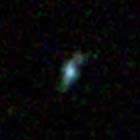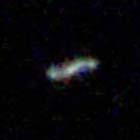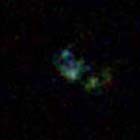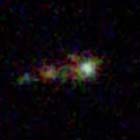Astronomers Find Spiral Galaxy Ancestors
These ancient objects, some of the first galaxies ever to form, appear as they did when the universe was young – a mere two billion years old. Scientists peg the universe’s age at 13.7 billion years today, which means light from these galaxies traveled almost 12 billion years to reach us here and now.
“Finding these objects and discovering that they are a step in the evolution of our galaxy is akin to finding a key fossil in the path of human evolution,” said Eric Gawiser, assistant professor in the Department of Physics and Astronomy in the Rutgers School of Arts and Sciences.
“We knew by our understanding of cosmological theory that spiral galaxies had to evolve from low-mass galaxies such as these,” Gawiser said. “The challenge was to actually find them.”
The galaxies that Gawiser and his research colleagues from Penn State University and other institutions discovered are quite small. They are one-tenth the size and one-twentieth the mass of our Milky Way. They also have far fewer stars: one-fortieth as many as are in the Milky Way.

The scientists probed these mysterious Lyman alpha emitters using two ground-based telescopes in Chile and two space-based telescopes, including NASA’s Hubble Space Telescope.
Each instrument gave scientists different information about the objects. When they examined their findings in connection with statistical analyses and computer simulations of how galaxies cluster, the scientists concluded they were seeing ancestors of spiral galaxies. Several of these galaxies would pull together over the ensuing few billion years to form a single spiral galaxy.
“The Hubble Space Telescope has delivered striking images of these early galaxies, with 10 times the resolution of ground-based telescopes,” said Caryl Gronwall, senior research associate in Penn State's Department of Astronomy and Astrophysics and Gawiser’s collaborator. “They come in a variety of shapes – round, oblong, and even somewhat linear – and we are starting to make precise measurements of their sizes.”



